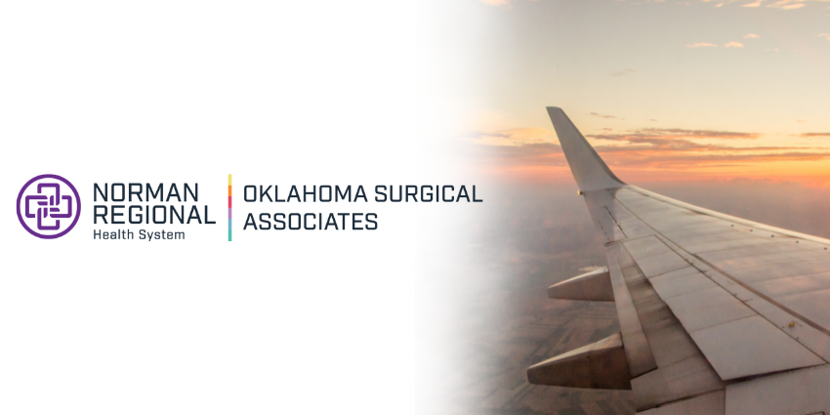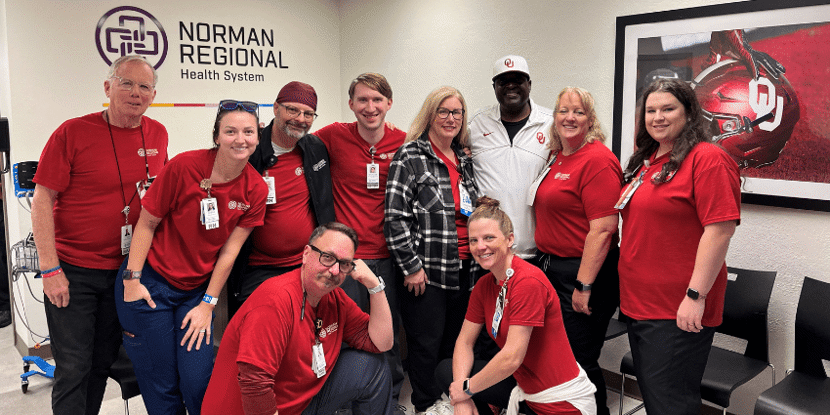Prevent Commotio Cordis in Athletes
- Category: News
- Posted On:

During the Buffalo Bills and Cincinnati Bengals Monday night game, Buffalo defensive back Damar Hamlin collapsed on the field following a tackle and doctors say he went into cardiac arrest.
This event has raised questions about the safety of football and the risks of sudden cardiac arrest in athletes.
Dr. Aaron Smathers, a sports medicine physician with Norman Regional’s Ortho Central said Hamlin likely suffered commotio cordis.
“When you get a blow to the chest that’s hard enough to disrupt the normal rhythm of the heart. It hits a certain part of the electroconduction in the heart and causes an arrhythmia or in this case, ventricular fibrillation. This is basically the heart is no longer functioning properly and it can’t get enough blood to the head, brain,” Dr. Smathers said. “We typically see this in younger athletes who have a more pliable chest, baseball is a culprit, martial arts, among other sports.”
According to the National Library of Medicine, there are less than 30 cases of commotio cordis reported each year.
“It’s very rare, especially in a full-grown male athlete with padding but it does happen.” Dr. Smathers said.
Commotio cordis is most commonly seen in young athletes who participate in high-impact sports, such as football, hockey, martial arts, and basketball. It’s often caused by a direct blow to the chest, such as a tackle in football or a body check in hockey.
One of the key ways to prevent commotio cordis is to ensure that all athletes are wearing proper protective gear, such as chest protectors and padded shirts. These types of protective gear are designed to absorb the impact of a blow to the chest and help prevent the heart from being disrupted.
In addition to wearing protective gear, coaches and athletes can also take steps to minimize the risk of commotio cordis by following proper tackling and blocking techniques. This includes using the shoulder to make contact, rather than the head or upper chest, and avoiding hits to the head and neck.
For parents who are concerned about their child playing sports, Dr. Smathers says you need to weigh the risks. “It’s scary to see. In the NFL we’ve seen the worst type of injuries that can happen but if you think about the popularity of that sport in this country, that’s a lot of kids and a lot of people doing it so the chances are low. So low, I think it’s important to keep kids in athletics of some type so they build lifelong relationships and exercise regiments.”
It’s also important for coaches and athletes to be aware of the signs and symptoms of commotio cordis, so they can seek medical attention immediately if they suspect someone may be suffering from the condition. Symptoms may include chest pain, shortness of breath, and a racing or irregular heartbeat.
“The response that the team had was very quick. If you go back and look at some of the other cases, they don’t assess quickly, they don’t treat quickly. That’s why I think there’s been a push to get AEDs on site and have an emergency action plan,” Dr. Smathers said.
During high school football season, Dr. Smathers is one of several physicians and athletic trainers from Norman Regional Health System who serve to help schools and athletes in case of heart problems, head injuries, bad breaks, and other sports-related injuries. The sideline physicians are there to help implement emergency action plans to ensure the best result for the athletes.
Preventing injuries and ensuring the safety of student-athletes are the main goals of any sport. Dr. Smathers says there are things athletes can do off the field to protect themselves.
“Your preseason conditioning, making sure your equipment fits properly and it’s up-to-date and approved by all the governing bodies,” Dr. Smathers said. “There’s off-season training, weight lifting there’s conditioning, and drills for athletes to stay healthy.”
Athletes should also eat properly, hydrate properly, and get a good night’s sleep Smathers says.
If someone is suspected of having commotio cordis, it’s critical they receive immediate medical attention, as the condition can be fatal if not treated quickly. This may involve administering CPR or using a defibrillator to shock the heart back into a normal rhythm.
Overall, while the risk of commotio cordis is very low, it’s important for coaches, athletes, and medical personnel to be aware of the condition and take steps to prevent it from happening. By wearing proper protective gear, following proper tackling and blocking techniques, and being aware of the signs and symptoms of commotio cordis, we can help to keep our athletes safe on the field.
Norman Regional's Ortho Central helps high school athlete who tears an ACL the retiree who needs a knee replacement, Ortho Central is here for each and every one of our patients. The expert team includes six orthopedic surgeons, two sports medicine physicians, bone health experts, physical therapists, and workers’ compensation specialists. Ortho Central’s Sports Medicine program includes a group of highly skilled athletic trainers who provide sports medicine services to athletes in schools across the Oklahoma City metro.



